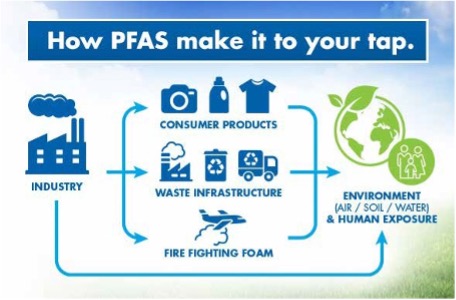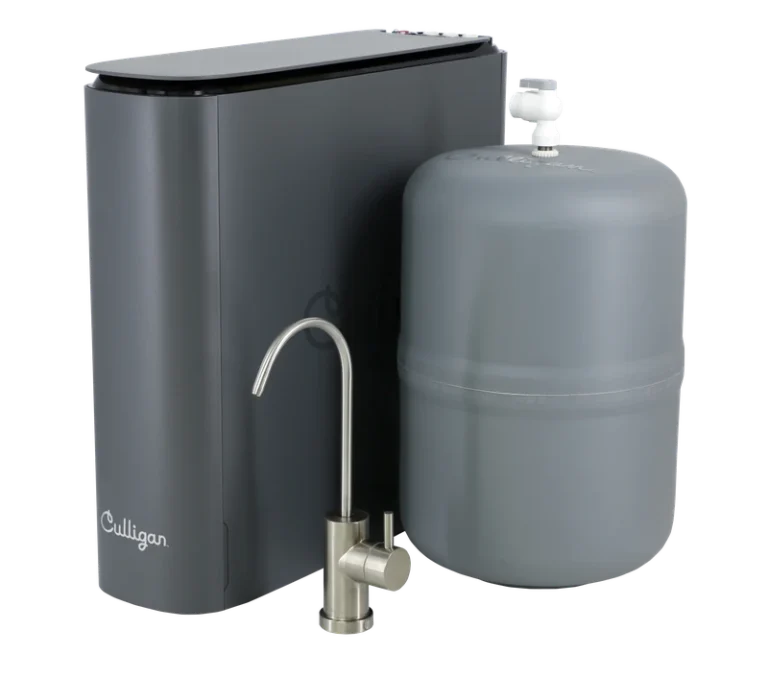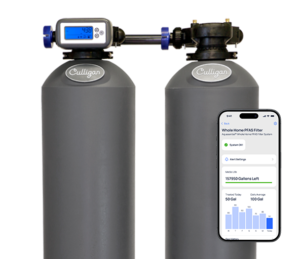PFAS In Your Water
PFAS water contamination impacts residents in many places across the United States. The problem with PFAS and similar contaminants is that, until recently, few people knew or understood them. Compounding this issue, PFAS have become nearly ubiquitous in our environment.
It started in the early 1940s, when water and heat-resistant chemicals containing per- and polyfluoroalkyl substances were engineered to help create non-stick products (Teflon), fire retardants, and other common consumer goods. What wasn’t understood at the time, however, was that Teflon and other products using PFAS wouldn’t naturally decay in nature–or the human body.
Known as bioaccumulation, this chemical characteristic means any amount absorbed in our bodies – through eating or drinking – stays in our bodies. Since we have no way of removing or disposing of these chemicals, they’ve earned the ominous nickname, ‘forever chemicals.’ As a result, most PFAS have been phased out of use in this country. But they remain prevalent in the environment, and this includes our water supply.
Want to install a Culligan Drinking Water System to filter out PFAS? Fill out the form below to be contacted by your local Sharp Water Culligan dealer.
Is My Water Contaminated With PFAS?
Certain areas have a higher propensity for PFAS-contaminated water. For example, if you live near an airport or a firefighter training facility where many of these chemicals have historically been used, there’s a good chance they’re still found in relatively high concentrations. Areas around manufacturing centers also commonly have elevated levels of PFAS, since they were used in the production of carpet, food packaging and production, and many other consumer goods. Read below to find out if there are PFAS in drinking water in the Delmarva Peninsula.
Is There PFAS in Dover, Delaware Water?
Recent testing has detected PFAS (per- and poly-fluoroalkyl substances) in some water sources in the Dover area sparking concerns about water contamination. While most of Delaware’s drinking water complies with federal PFAS standards, areas around Dover Air Force Base have shown elevated levels of these “forever chemicals.” In 2019, four private wells near the base were found to have PFAS levels up to 2,400 times the federal health advisory limit.
The Air Force base has been designated a Superfund site due to extensive groundwater contamination, including PFAS. However, it’s worth noting that deeper wells supplying drinking water to the base tested negative for PFAS in 2014. State agencies are actively investigating and implementing solutions to address PFAS in drinking water, surface water, and wastewater systems across Delaware.
Is There PFAS in Salisbury, Maryland Water?
PFAS have also been detected across the Salisbury and Eastern Shore water, but current levels remain within regulatory limits. The Salisbury area reported PFAS levels ranging from 3.2 to 14 parts per trillion (ppt) in its water system. Although these levels are below the EPA’s upcoming regulations, set to take effect in 2029, the city is taking proactive steps to address the issue.
Salisbury has been preparing for years to meet stricter standards. The city is conducting studies to identify the best methods for PFAS removal and has applied for funding to implement advanced treatment solutions. Additionally, Salisbury is participating in a nationwide lawsuit against PFAS manufacturers. Despite the presence of these chemicals, city officials assure residents that Salisbury’s water meets all current quality standards.

Removing and Preventing PFAS Contamination
There is no way for you prevent PFAS contamination in the environment, but you can make sure the water you’re drinking is PFAS free. If there is good news regarding PFAS water contamination, it’s that they can be treated and removed from water with the right filtration. For example, several methods, like carbon filtration, ion exchange, and reverse osmosis water treatment effectively remove PFAS from water.
What About PFOA? Where Are They Found?
PFOA, the most notable substance of the PFAS family, was found to be a part of the manufacturing process of Teflon. The EPA sued DuPont in 2005 for failing to report a health risk to both humans and the environment. The company paid a $10.25 million settlement.
Because of PFOA and PFAS strong molecular structure, they take much longer to break down naturally than other organic chemicals.

Until 2002, PFOA were integral in producing goods which qualities repel dirt, grease, water and stains.
These contaminants can be found in the manufacturing process of a variety of products, including non-stick cookware, carpet-care liquids, treated apparel, upholstery or textiles, sealants, dental floss, floor wax and non-woven medical garments. Though PFTE non-stick cookware was proven to have PFOA levels, a recent study found levels that ranged from undetectable to 4.3 parts per billion, and it is not currently considered a major pathway for PFOA.
Just last year, United Nations experts recommended banning PFOA globally at the Stockholm Convention on Persistent Organic Pollutants. Will the United States follow suit based on recent outbreaks in Texas and Michigan.
Problems with PFOA
According to a study from 2002-2005, people who lived in the PFOA-contaminated area around DuPont’s Washington Works facility were found to have higher levels of PFOA in their blood from drinking water. People who drank more local water, ate locally grown fruits and vegetables, or ate local meat, were all associated with having higher PFOA levels.
Residents who used carbon filter systems had lower PFOA levels.” Studies have found that using carbon-activated filters can reduce PFOA by up to 60%.
Recommendations by the EPA
The EPA has issued a “Health Advisory” for PFOA and PFAS, but this does not amount to any actual forced federal regulations on municipalities to control and monitor them.
The EPA has established health advisory levels at 70 parts per trillion as of 2020.

How Much Is 70 Parts Per Trillion?
To compare 70 parts per trillion, think of a drop of ink in a backyard pool. According to its website, “EPA’s health advisory level for PFOA and PFOS offers a margin of protection for all Americans throughout their life from adverse health effects resulting from exposure to PFOA and PFAS in drinking water.”
A few of the adverse health conditions a lifetime of exposure can lead to are develop- mental effects in children, kidney and testicular cancer and immunodeficiency disorders.
Solutions
Suggested Products

The Aquasential® Smart Reverse Osmosis Water Filter (RO)
- 2-in-1 sediment and carbon filter screens out sediment and particles, reducing elements that cause water to taste and smell unpleasant, including the taste and odor of chlorine.
- Reduces dissolved substances such as radium, arsenic V, and many others. Various capacity membranes available.
- Optional specialty filters available providing a range of benefits including pH balance or the reduction of additional substances such as VOC, pharmaceuticals and mercury.
- A second carbon filter ensures your drinking water is cleaner and fresh.
- Manifold assembly molded using SteriTouch® resin, the patented single manifold ensures reliability and houses four separate filters.

Aquasential® Whole House PFAS Water Filter
- Third-party certified to ANSI/NSF standards, the Aquasential® Whole Home PFAS Filter can reduce total PFAS by up to 99.9%.
- The PFAS filtration system operates effectively with minimal water pressure loss, even at higher flow rates.
- The built-in Smart Flow Monitor records the water treated by your system and calculates the remaining filter life, so you can always have the peace of mind that you’re getting optimal PFAS reduction.
- Easily check system performance, get alerts when filtration media needs to be changed, monitor water usage and set conservation goals using the Culligan Connect App right on your phone.

Facebook